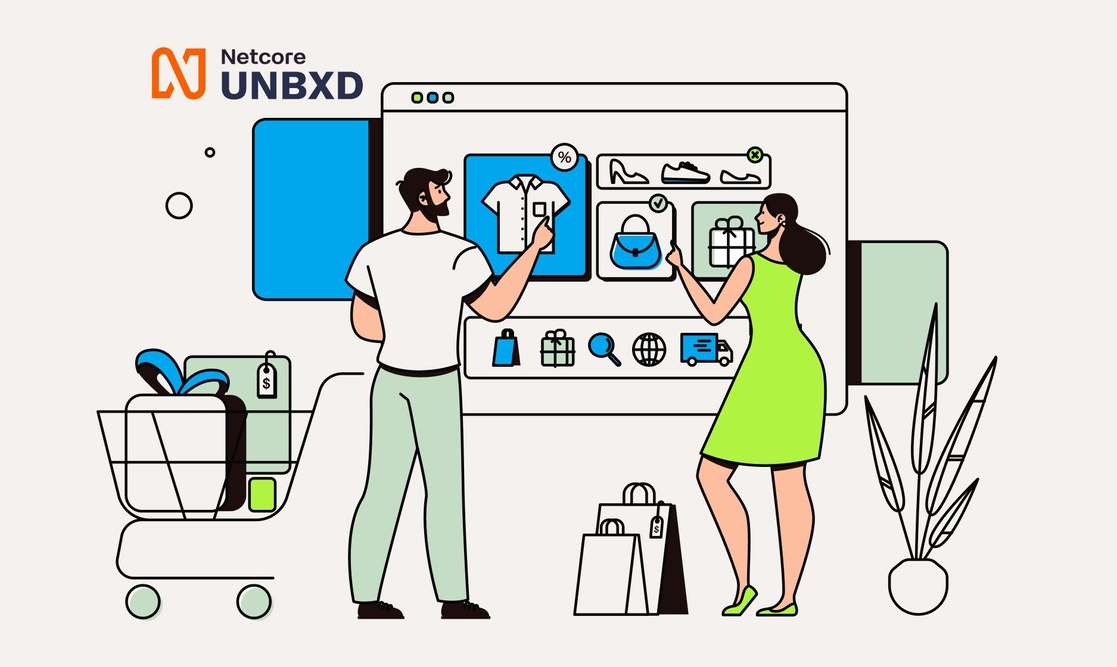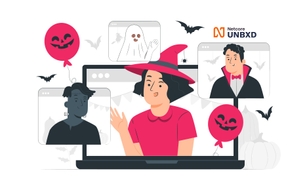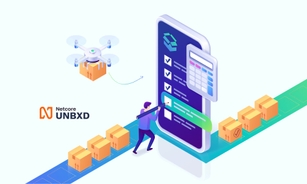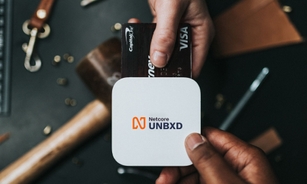- ProductsSearch and BrowseRecommendationsCustomer Engagement


As we know from his characteristics and past behavior, Peter is quite particular about his shopping habits. He doesn't trust easily, and he doesn't get impressed easily, either. Trust is a relative issue when you compare the shopping experience online with the one you often visit in your city, the standalone market.
The shops that still highly retain shoppers have a magnificent 'return-again' factor; why, you may ask? The reason is the spectacular combination of the 'human touch' of personalization and the ethical organization of products.
Even the shops with umpteen diverse products may not have the visibility the other shops may have because of proper segregation. Who doesn't like to see dairy products, bathing products, snacks, and accessories segregated adequately into different sections as you enter the shop?
A similar architecture as a well-polished replication on your ecommerce site can work wonders for your online business as a merchandiser. The online store display is equal to the traditional storehouses. So the best way to move around is to collate a 'Search' experience with the 'merchandising' one.
'What is' and 'Why' Merchandising?
Merchandising is how you properly organize your products for online shoppers to help them make easy and quick decisions. This is to your online store what planograms are to a mom-and-pop store. And not just about the shoppers. Merchandising revolves around growing your revenue cycle.
But the real-time analysis displays that most of the time, the Merchandisers don't even exploit these techniques as much as they have paid for.
Merchandising techniques by Unbxd have evolved in such a way that they entice the customers and cater to the shopper's persona in the best possible manner.
There is no denying that customers like a well-structured product listing, finding their intended products faster, or even being able to find more than what they came looking for.
How do we go around it?
Revisit your Analytics tab often.
The most common reason for an average search experience is looking at the analytics tab only to judge the selling products, like hotcakes. But the worthiness comes out when you check the account for underperforming products, cart abandonment rate, zero search results, and most searched queries. With all the parameters in place, a workaround to add diverse synonyms of the most-searched questions, avoid misspellings, and share the marketing mailers with the shoppers who left the cart without placing an order.
Act like a shopper.
What is the best way to heal the pain points of the shoppers? Act like one.
Visit your site and try searching for queries. Look at the projected display of products and match the relevancy that appears. Why are a few products ranked higher? Why does 'Sequin Glitter Dress' appear when you search for 'Glitter Dress'? Why is 'red bag' also appearing when you search for 'red dress'?
Calculate and tabulate the relevancy settings for plausible behavior. Then, improve your search logic with Unbxd and showcase only the best results that emulsify buying satisfaction.
Once you calculate the site behavior, now is the time to apply the conjectures into actions and bring results. Let's see the merchandising tips and tricks to do so.
This is precisely what Merchandising helps you do for your site.
Therefore, we at Unbxd have defined a few merchandising techniques to cater to the buyers and increase sales for brands/products you wish to promote.
So that we can make use of these slick and innovative merchandising techniques efficiently, let's understand them in detail:
Boosting
Boost helps to promote the defined products on the top of your product display page when that query is searched. As a merchandiser, you can promote products that bring in more revenue or visibility.
But how do you decide what to promote and when to promote it?
The relevancy is decided by connecting the data points (clicks, carts, and orders) and analyzing the popularity, price, ratings, inventory number, and date. This might seem like too much information to consume and digest, but we make it super simple for all you merchandisers out there with our easy-to-use Unbxd Merchandising Console.
For example, iPhone transparent covers from your catalog get the most search hits and clicks, then when a shopper searches for an iPhone, boost iPhone Covers along with them.
Why Boost
Use Case: Peter logs in to your site and is looking for 'Harry Potter books. For this query, you had boosted or promoted the 'Harry Potter Book' collection at the top. Peter was looking for just 'Prisoner of Azkaban,' but when he saw the assorted collection of all the Potter books at a much lesser price, he added it to the cart and later bought it. And if you don't offer international shipments, "bury" the offers for non-domestic shoppers.
You can boost in the following conditions:
-
Put forth the products that you feel can fetch more sales to you.
-
New Arrivals., Due to no sales, stats may not be displayed on the search query's first page, but boosting them can help gain visibility. It's as if the new 'iPhone' was launched. Highlight the product to increase sales.
-
Brands want their products to be displayed at the top. Suppose Nike wants that when a shopper types' Running Shoes, Nike shoes are the first to be shown.
-
In such a way, boosting products always helps. Unbxd allows you to create 100 levels of boost/bury groups to promote or demote specific product categories. For instance, while you boost the 'Puffer Jackets' for the 'Jacket' query, you bury the 'Trucker Jackets' for winter. You cater to your shoppers by promoting the right products.
-
The power of boost helps you dodge the shoppers to the end gate!
-
Filters always help to create a more manageable set of products based on their attributes. Peter was looking for a good pair of headphones for his trip. He typed 'Headphones' on the search bar and got. They were overwhelmed by the options. So, that is when filters come into the picture. Filters trickle down the search results to exactly what a shopper would like to see.

When a query typed by shoppers gives multiple products, the segregation of those attributes helps the shoppers make a relevant choice. So, if a shopper comes to your site and searches for ‘phone,.’ What a generic request, right? But it becomes effortless if your site provides product attributes as ‘filters.’ The filters are:
-
Price
-
Brand
-
Color
-
Rating
And the shopper simply goes to price and selects between 35000-50000 price range and the brand ‘Samsung.’ The shopper is sorted. The multiple attributes simplified his journey; they can now scroll through the products and place an order.
Why filtering?
Use Case
Whenever the people searched' Floral Shirts,' the maximum number of them always searched for M size. So, as a merchandiser, you set a filter to size M whenever anyone searches for ‘Floral Shirts.’ In this way, you distinctly reduced the number of steps for a shopper to shop!! Eventually, it shortens the path to purchase.
Slotting
Slotting manifests a specific set of product categories at the defined slots. We have often seen this as a merchandising trick to place your brand products specifically at top slots to promote self-brands. This is how slotting proves feasible.

Capture your top row on the display page with your brand’s products. As you scroll down, create slots of other brands, and further down, let the ranking settings play the game and adjust the products. Peter typed ‘almonds’ on the Amazon site where he saw ‘Solimo’ (an Amazon merchandise) branded Almonds on the top row. And as he scrolls down, he also sees a varied distinction of Almonds.
Why slotting?
Slotting ensures diversification. When sites create slots, they show the variety of products they carry and do not just overpower the search results with their promotion.
Use Case
If people search for Almonds, the first slot shows your brand of Almonds, the second slot displays other brands, and the rest slots are left to be displayed based on the product rankings. The better the ranking, the better the product shows on the third slot.
Banners
How ecommerce sites differentiate their shoppers depends a lot on their marketing strategy. These banners are images with a clickable link that redirects the shoppers to another page where they can shop wishfully.

To promote a specific upcoming product, festival, sale, or anniversary, you have to make flashy images that act as banners on the top of your site.
Use Case: It is the Ironman season, and all people can search on your site are running shoes, sports t-shirts, and accessories. Your diversified ecommerce site displays products for all brands. You create a banner exclusively for the upcoming sports season with the ‘Ironman’ theme. People are intrigued and elated to find all sports accessories on one page. Banners indeed made everyone wander around your site!
Landing Page
Be it a festival, an occasion, or an upcoming sale, we need a dedicated page exclusively for all the related products in one place, and that one place is called the landing page. So often, when we see ecommerce sites flooded with festive feelings, they promote their products by creating sale banners and landing pages.

It is January, and the Clearance Sale is set to come up across all the sites. You need to ensure the shoppers don’t suffocate when the Sale options or the New items. So, you create a landing page for the sale items. When shoppers are redirected to it, they scroll through options between brands like H&M stealing the show with 70% or Veromoda offering 50% flat. At the same time, the shoppers who are barely interested in buying the sale items can scroll through the main page of your site hassle-free.
This segregation lets you deal with your shoppers in the most efficient way possible.
When to use these Merchandising Tricks?
The most significant difference lies in the structure of their use. Boosting is preferred when you want to promote something on the top search results of your site, like your own brand, popular products, or the recent ones added to the catalog. Banners are created when a brand wants to promote its products in one place or when products must be displayed for a sale or occasion, which can mean a coalition of different brands. But with slotting, you ensure the structure of your display page with the first slot of your brand products, the second slot created for other popular brands, and the third slot for random best-ranking products. Slotting can be best applied to the category list of products.
Use Case
Let’s understand all three with a single example. The iPhone is all set to launch its new product, XS. The iPhone wanted to promote XS even when a person searches for a Samsung phone (BOOSTING). iPhone also wanted to encourage all its phones before and during the grand launch, and therefore, your site created a banner with the ‘Grand Launch of XS’ (BANNER). When shoppers click the banner, they get to the landing page with all the iPhones and accessories in one place (LANDING PAGE). But even on the landing page, the way products must be displayed. So, you create the top slots with the newly launched XS (SLOTTING), the second slot with the recent iPhone 8, and the other product slots appear based on the ranking.
This is how we segregate our merchandising techniques to improve the search results and let the shoppers rely on your site for the best shopping experience!
Best Practices:
- Boost the high-earning brands and the new ones that are gaining popularity. Vary the inventory list concerning locations. For example, winters in the US boost winter jackets for their markets while burying them for Indians.
- Create banners and landing pages for occasions that mark high order value. Create slots on landing pages and ensure full scale out of stacked-up inventory during these times.
- Proper A/B testing from time to time can ensure a change in the merchandising techniques if needed.
- Try to make autosuggestive solid keywords to balance out the techniques.
- To maximize the benefits of the application of merchandising techniques, add synonyms for misspelled queries and autocomplete keywords.
How does Unbxd fit in?
Unbxd has a variety of merchandising techniques that can improve an ecommerce site’s life. Though we don’t have a customary policy to apply these techniques post-live or pre-live, it is advisable if it is done post-go-live. In such a way, you get a breathing space to decide which products to promote, which filters to apply, or how to display them on the results page based on analyzing the site reports. Book a demo to learn more about the merchandising console!


